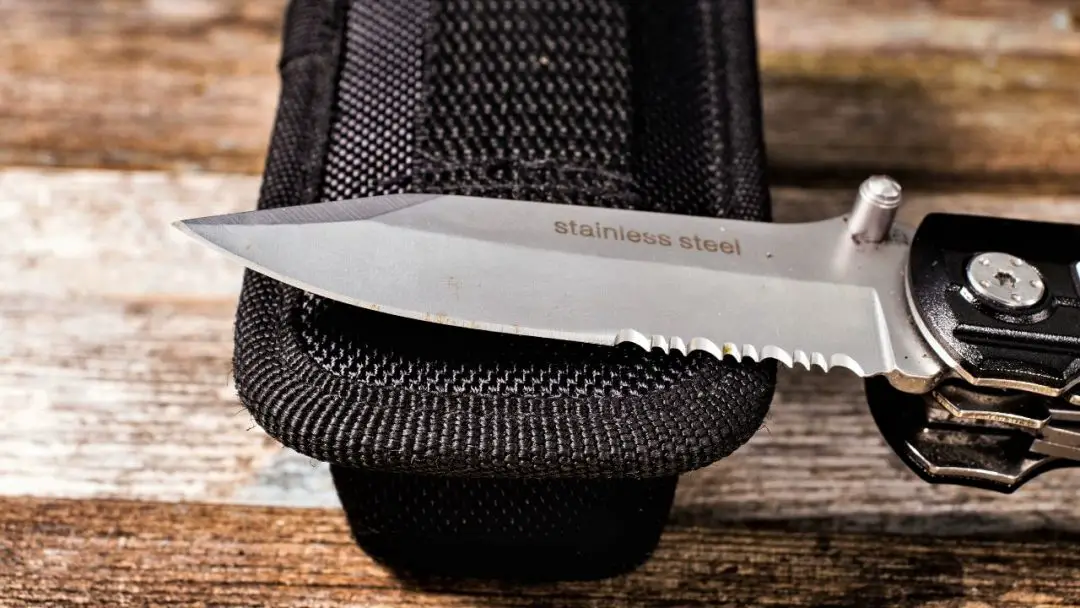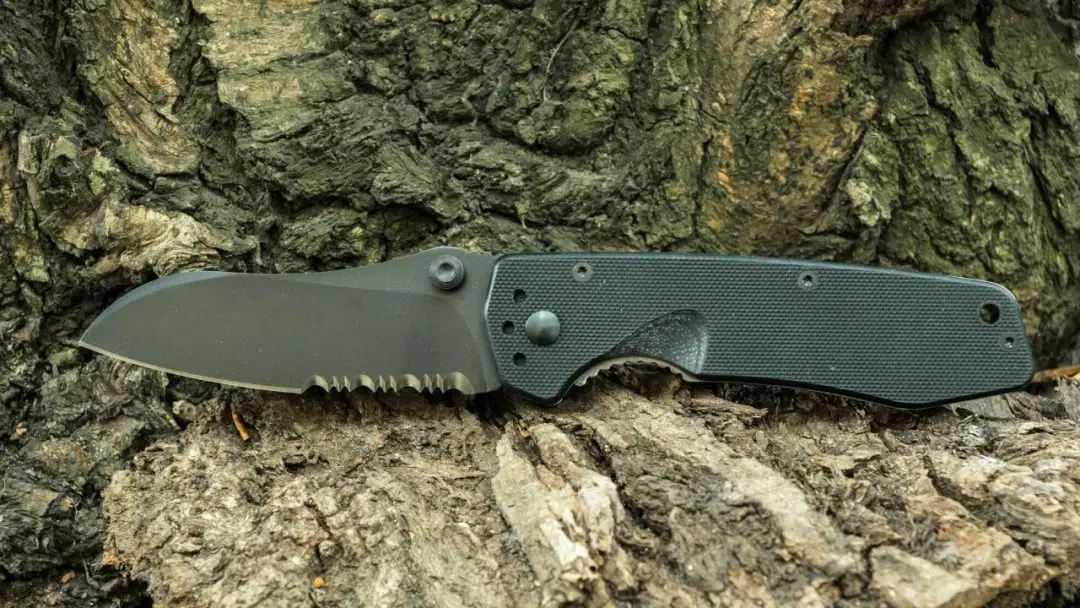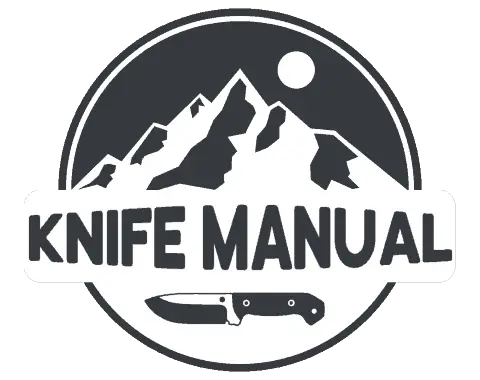
Pocket knives with serrated blades are looked upon as either the best tool ever invented or the worst design choice ever depending on who you are talking to. In today’s article, I hope to push past the misconceptions and take a deep look at what serrated pocket knives are actually good for and what tasks they excel at completing.
Knives with serrated blades are great for many jobs and tasks, but they work best for cutting materials that are tough, flexible, uneven, or slippery. The serrations on the blade catch in the material and hold it in place, which allows the user to make precise cuts using a sawing or slicing motion.
Serrated blades on pocket knives can be either really useful in a situation or a big burden, and it really comes down to what you are doing with it and what type of skills and experience you have. While technically you can do most tasks involving a knife with a serrated blade, there are certain tasks that lend themselves to that type of blade better than others do.
Below I will go more in-depth on what serrated pocket knives are commonly used for as well as some specific examples of tasks that can be competed with them.
Table of Contents
What is a Serrated Blade Pocket Knife Used for?
Serrated pocket knives can be used in many different situations and for many different jobs, but they work best for cutting materials that are slick, wet, or need to be cut using a sawing motion. By no means is this the extent of their usefulness, but the serrations of the blade work great for these types of jobs.
The serrations on a serrated blade work to grip into the material being cut so that the user can accurately make their cut without the blade slipping around on the surface. This feature wouldn’t be very useful in most cutting situations, but as soon as the material being cut is uneven or slippery in any way, a serrated blade becomes a real asset.
Whether you are an outdoorsman, paramedic, sailor, or really any hobby/profession that requires you to cut things with a knife, a serrated blade will often come in really handy.
They are often a little bit less versatile than a straight-edged blade, but a serrated blade comes in really useful when the conditions call for it. If it is really wet out or the material that needs to be cut is very slippery or uneven, a serrated blade will make the process a lot easier and a much more pleasant experience.
Specific Ways to Use a Serrated Blade Pocket Knife
While it is all well and good to blatantly say that serrated pocket knife blades are good for cutting uneven, slippery, wet, or tough materials, below I think it would be great to go into more detail into some of the specific instances and materials that a serrated blade works well on.
Clearly, this is not the end-all-be-all list of things that a serrated pocket knife can cut. In reality, a serrated pocket knife is a very versatile tool and can be used in many different situations.
So let’s just jump right into it and take a look at some more specific ways that you can use a serrated pocket knife blade.
Cutting Rope and Twine
At one point or another, almost everyone will be in a situation where they need to cut through a piece of rope or twine. And sure, while almost any sharp blade or material can get through a piece of rope, a serrated blade is an absolute champ at the job.
The serrations on the blade work perfectly in your favor and allow the blade to grip onto the circular or slippery surface of the rope or twine. After only a few slashes, a serrated blade will be able to get through most ropes with relative ease. Even if the rope or twine that you are trying to cut is soaking wet and really slippery, a serrated blade can usually get a good grip on it and cut it pretty easily.
Slicing Through Fabric
Fabric is an especially tricky material to cut through with a knife, but a serrated blade can usually get the job done quite well.
When you try to cut a piece of fabric with a plain edged knife, it will usually slip away or just slide right under the blade without being cut. To actually cut through a piece of fabric with a plain edged knife you would have to find the edges of the material and painstakingly slice away at the edges where the blade can get a hold on the rather slippery material.

However, with a serrated blade, the serrations can easily get caught on the slippery surface of the fabric and allow you to cut through the material a lot easier. While the cut might not be as clean as if you did it with a pair of scissors, it will get the job done and you won’t have to slice away at the edge of the fabric to get any traction.
Cutting Small Branches and Other Wood
While it isn’t particularly the best use for a serrated pocket knife, if the need arises you can actually cut through small branches or pieces of wood. Mind you, the wood can’t be too large; usually a little smaller than the length of the blade works best.
Wood and small branches are usually rough enough to let the serrations on the blade get caught up in the material and make it a lot easier to cut through. While it really depends on what you prefer, cutting through a piece of wood can either be done using a sawing motion or by slashing at a single spot on the wood.
Slicing Soft Bread
Most kitchen knives and plain edged knives can get through a pretty firm piece of bread, but what about when you have softer and more doughy bread? That’s when most of the problems arise, but luckily a serrated blade can usually get the task done cleanly and well.
With almost any other type of cutting tool or knife blade that is not a serrated blade, cutting soft bread results in more of a mush than a clean cut. While this isn’t a huge deal if you are by yourself in the woods, who wants to serve mush-cut bread to their friends? Definitely not me.
A serrated pocket knife is usually a really good way to go because the serrations help to catch in the softer bread and you can saw through the food a lot easier and produce a pretty clean cut.
Cutting Meat
Wither you are cutting up some lunch meat or slicing into a nice ham, the meat is undoubtedly pretty slick and slippery. In rare instances this isn’t a problem and a plain edged knife can cut right into the meat, but from personal experience, it is tougher than it seems to cut into a nice and juicy piece of meat without a serrated blade.
It just makes the whole experience go a lot easier when you use a serrated knife to cut into the meat because the serrations on the blade grab onto the slippery surface and allow you to slice it without slipping. This will result in cleaner slices and a much more pleasant experience, trust me.
Cutting Fruits and Vegetables
Vegetables and fruits can be a real pain to cut up and slice if you don’t have the right tools. Don’t get me wrong, a serrated pocket knife isn’t the ONLY way to cut up a vegetable or fruit, but let me tell you it makes a whole lot easier.
With some plain edged knives, cutting fruits or veggies would mean slipping around on the surface fo the food until it finally cuts in and you are able to slice. Whether you are in your kitchen or out in the woods at your campsite, a serrated blade will easily catch on the outside of the fruit or vegetable and simply cut right into the food without a lot of slipping around or anything.
Other Tasks
As I mentioned earlier in this article, this list of specific ways that you can use a serrated knife blade is far from a full list. It would be nearly impossible to try to list all of the ways that you can use a serrated knife blade.
The point of this list, beyond just showing you ways that you can use a serrated pocket knife, is to inspire you to think of ways that you could use a serrated blade in your life. Many people just scoff and ignore serrated pocket knives, but they are actually pretty useful once you begin to think about how you could use them to simplify or make your life a little bit easier.
It might take some time or thought to actually figure out how you can use a serrated blade in your life, but I almost guarantee that you can find a way and it will make doing whatever task or job a lot easier and more enjoyable.
